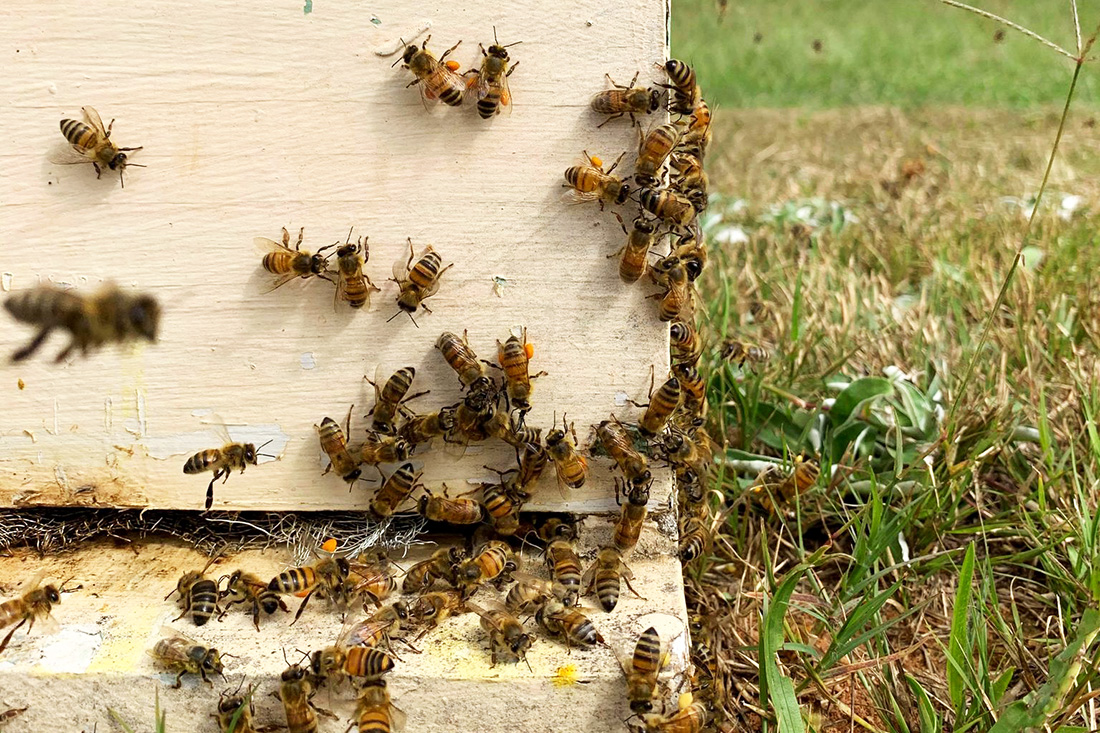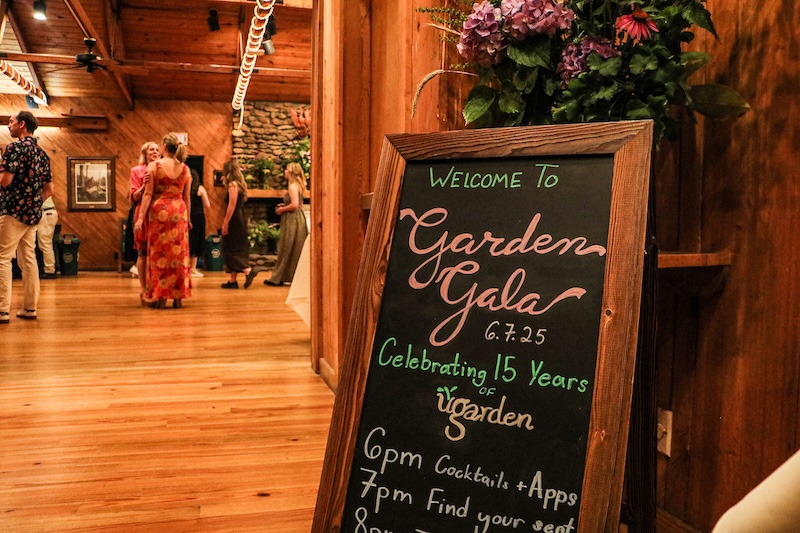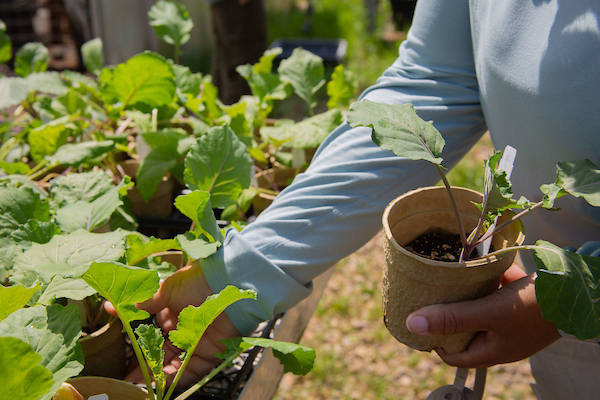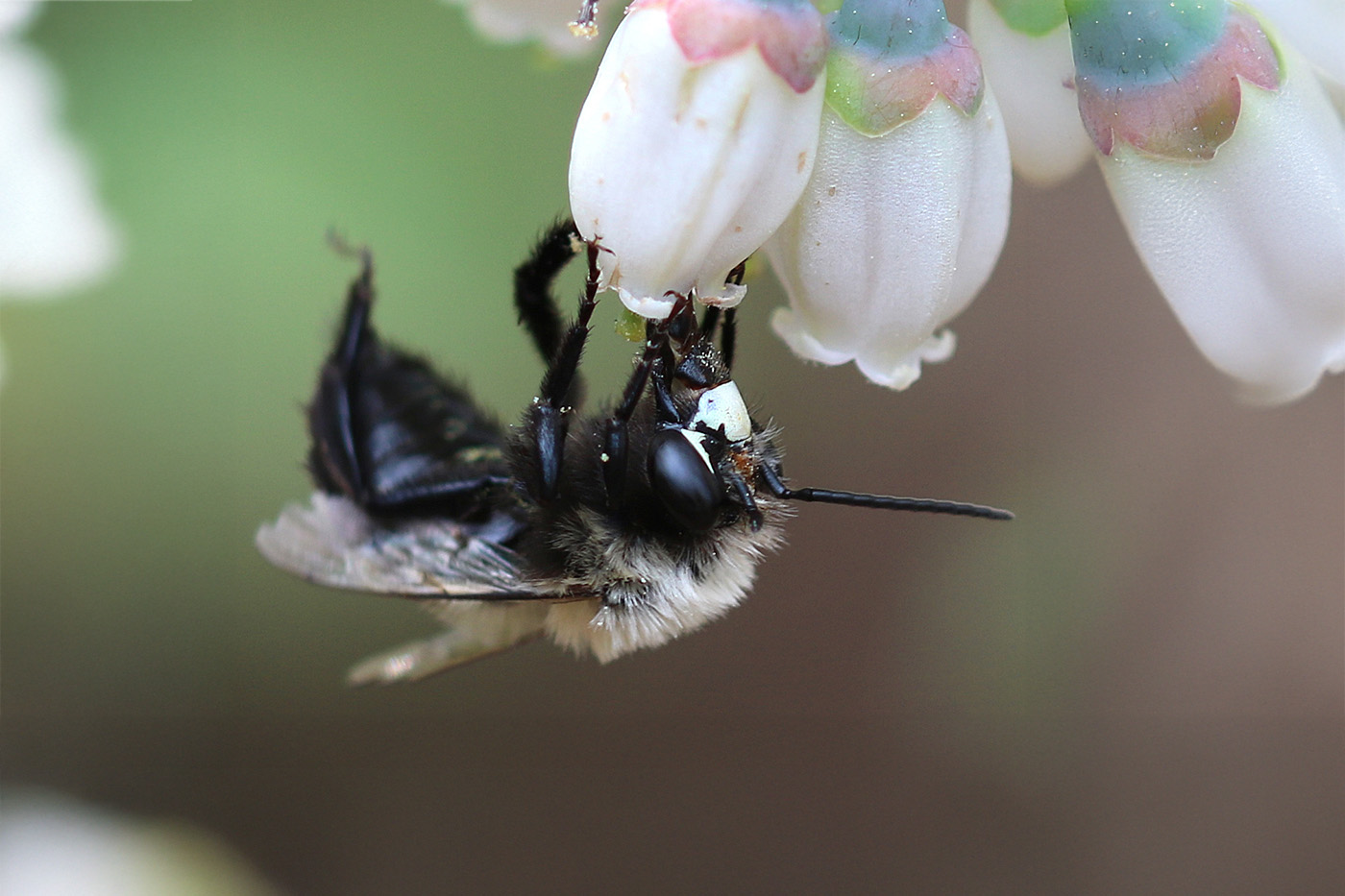
Long before a ripe blueberry makes it into a grocery cart or muffin mix, a native bee has likely played a quiet but critical role in its journey. Now, thanks to a University of Georgia study on wild bee diversity in blueberry fields, we know more about just how essential those wild pollinators are to one of the state’s most valuable fruit crops.
Sarah Rezende, a doctoral candidate working with Associate Professor Jason Schmidt in the Department of Entomology, is working to uncover what Georgia’s wild bees need to thrive — and how their movements shape the productivity of commercial blueberry farms.
As part of a broader USDA Natural Resources Conservation Service (NRCS) project aimed at boosting blueberry yields by establishing pollinator- and predator-friendly flowering plants around fields, Rezende focused on how wild bee populations shift across space and time in southeast Georgia blueberry farms.
In 2023, Georgia’s blueberry industry generated more than $526 million in farm gate value, making it the state’s eighth most valuable crop. Georgia also ranked third nationally in blueberry production, emphasizing the importance of pollinator health.
Over two growing seasons, Rezende and her colleagues at the College of Agricultural and Environmental Sciences and international institutions surveyed eight commercial blueberry farms, sampling bee activity within blueberry fields, along their edges and in adjacent forests. Their findings could help farmers better support the native pollinators that power this key agricultural sector.
An abundance of native bees
The study, published in Environmental Entomology, recorded more than 5,000 wild bees, identifying 72 species across 26 genera — the most comprehensive survey of wild bees conducted in Georgia blueberry farms.
“I’m honestly amazed by the diversity of bees,” Rezende said. “There are tiny bees and big bees, and even small blue bees that nest in the stems of plants, a type of carpenter bee that is not familiar to most people but was abundant in this study.”
Rezende found that bee diversity and abundance fluctuated significantly throughout the season, with a surprising peak in species richness after the blueberry bloom across all three habitat types.
“This shows that native bees are active and need resources well beyond the short blueberry blooming window,” said Rezende. “That three-week bloom isn’t enough to support their populations year-round.”
Field-edge and interior locations saw a distinct peak in bee abundance between May and June, while adjacent forests maintained a more consistent bee population across the season. Species composition also varied with time and location, with shifts in dominant species at different times.
“This kind of data is foundational,” Rezende said. “It tells us which bees are present, when they’re active and what kind of habitat they’re using — all of which is key to crafting targeted conservation plans.”
Blueberries need a special kind of buzz
Blueberries rely heavily on pollinators, but not all bees are equally efficient. While growers often rely on honeybees because they are easy to transport and manage, honeybees are not as effective at the specific type of pollination blueberries require, called sonication — or buzz pollination.
Buzz pollination involves bees vibrating their flight muscles at a high frequency to shake pollen loose from the flower’s anthers.
Native bees, like the southeastern blueberry bee (Habropoda laboriosa), are much better suited to the job than other bee species. In fact, a single female southeastern blueberry bee can pollinate up to 50,000 blossoms, producing more than 6,000 blueberries in one season. By comparison, past studies have shown it takes six visits from honeybees to achieve what one visit from this native specialist can accomplish.
Supporting Georgia’s hidden pollinators
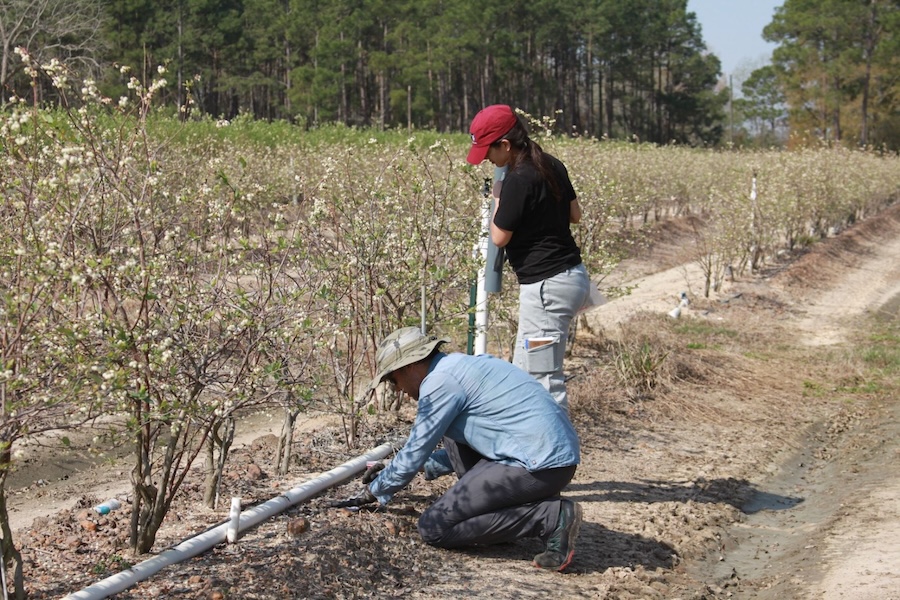
Georgia is home to more than 500 native bee species — part of the 4,000 known species in the U.S. and 20,000 worldwide — yet their role in agriculture is often underappreciated.
“Most people only think of honeybees when they hear 'bee,'” Rezende said. “But 90% of bees are solitary, not social. They don’t live in hives, don’t make honey, and they’re much less aggressive. These bees are focused solely on pollination and reproduction.”
Wild bees use a variety of nesting habitats. Some dig tunnels in the ground, preferring sandy or clay-rich soil depending on the species, while others nest in wood or leaf litter on the ground. Rezende’s research showed that some species stuck to forested areas, others to the field interior, and many used all three habitats at different times.
Creating a more hospitable environment that supports both the pollination and habitat requirements of native bees can help boost populations of southeastern blueberry bees and other species that are particularly effective at pollinating blueberry flowers. Blueberry bees, for example, nest by digging tunnels up to 25 inches deep into the soil, which makes them difficult to manage. Their active period is brief — only about three weeks.
“If their emergence doesn’t align with the blueberry bloom, they can face limited food resources, which negatively impacts population numbers the following year,” Rezende said, adding that providing additional floral resources outside of the bloom period can help buffer against this mismatch and reduce the risk of food scarcity.
Timing is everything
Native, wild bees have a remarkably focused life cycle, Rezende explained. In the case of the southeastern blueberry bee, males and females emerge, mate almost immediately, and then the female begins the work of gathering pollen and nectar to provision her nests. She lays an egg, seals the cell and repeats the process — collecting food, building a new nest and laying another egg. Once her brief active period ends, she retreats into her final nest and dies. The following year, her offspring will emerge and repeat the cycle. Her sole purpose is to pollinate blueberry flowers — a service from which we directly benefit.
Most native solitary bees follow a similar lifecycle, though their pollen and nectar preferences vary. A female’s ability to lay eggs depends largely on the availability and proximity of food sources. The closer the resources, the less energy she expends, allowing her to produce more offspring. In her short life, she may lay up to 20 eggs.
A guide for farm workers and residents alike
To help share these insights, Rezende collaborated with UGA Cooperative Extension to publish a “Visual Guide to Common Bees of Blueberry Fields in Southeast Georgia” — available in both English and Spanish. The guide helps the state's farmworkers, many of whom are Spanish-speaking, recognize the diversity of wild bees and understand their ecological role.
The most important thing farmers and residents can do is support a wide variety of flowering plants that bloom throughout the year. This not only helps sustain a diverse range of bees but also ensures their populations remain strong across seasons. Because different solitary and specialist bee species forage at different times, continuous blooms are essential.
“Diversity and abundance are key,” Rezende said, noting that even small disruptions to habitat can wipe out an entire species. She added that nesting needs vary widely, especially among ground-nesting bees, and are often overlooked. “By paying attention to a variety of habitats, we can give more bees access to the nesting sites they need to survive.”
To learn more about how to support and protect pollinators, visit UGA Extension's Protecting Pollinators webpage for planting resources, management guides and best practices.

